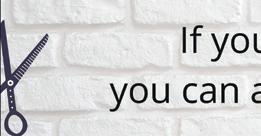Booklet and Resource Pack


Primary: Upper Key Stage 2
































































































































































Primary: Upper Key Stage 2





























































































































































As a university committed to widening access and participation, we know that young people begin to form their aspirations towards future study options, jobs and careers long before they reach secondary school age.
A wealth of research indicates that primary school aged learners are actually already beginning to construct limiting concepts of their future ‘possible selves’ by time they are 11- years old. Unfortunately, due to a lack of age-appropriate inspirational careers advice and guidance, this means many of our young people are writing themselves off attending university before they have had the opportunity to make an informed decision.
We have designed the UWIN Aspire Primary Booklet and Resource Pack for Key Stage 2 teaching staff to support their learners explore the world of universities and careers through a series of fun and interactive pre-planned lessons. Together, your learners can address some key questions that will help them inform their future aspirations including:
• Who can attend university?
• What gender stereotypes exist in the workplace?
• How different subjects can support future career pathways?
• What are skills and how do these link to dream jobs?
Sarah Harder-Collins Head of Participation and Success University of Winchester
This booklet is here to guide you through each session to support the delivery of the activities. Work your way through each session (or you can pick and choose which ones to use based on the time you have available).
The resources you need for the session are found within the pack and they will need to be printed before each session. You can find presentation slides and copies of all resources on our UWIN Aspire webpage, which can be accessed by scanning the QR code to the left.

1. Work out which page number the resource is on (top corner).
2. Go to the print button on the top right hand side of the screen.
3. Select custom pages and type in the page number/page numbers that you wish to print. (You can also write in how many copies of the page you require).
This session explores who is eligible to attend university. The learners will understand that physical and mental barriers can be removed to enable everyone to attend university.
• Pictures of diff erent groups of people. Learners can complete this activity in table groups.
• Jamal’s Story presentation. Ideas can be generated verbally.
Time: Approx 40 mins
It is split into 2 activities:
Present learners with the people profi les (available on the next page). Learners need to organise them into two piles: who can go to university and who can’t go to university. The only people who can’t attend university currently are the children in year 2! Have a class discussion on each of the character cards, explaining how barriers can be removed.
Follow the PowerPoint titled Jamal’s Story. There are opportunities for learners to discuss their own ideas as the story unfolds. The learners should be able to identify that changing your mindset can give you more career opportunities. Here is the first slide of the PowerPoint for your reference.

















































































































Cut out these profi les and give a selection to each group.
Activity
Ask the pupils to read the profi les and use the pictures to help them sort the cards into two piles:
Who can go to university: ‘Yes’ and ‘No’.































Hello! My name is Clara. I love to learn and enjoy reading. Do you think I could go to University?





















Hello! My name is Ronnie and I have been happily retired for 10 years. Do not tell anyone but I am now in my 70s! My previous job was a Designer. Do you think I could go to University?
Hello! My name is Marina and this is my daughter Anya who was born 6 months ago. Isn’t she beautiful! Do you think I could go to University?















































Hello! My name is Max. I enjoy music and fashion particularly hoodies and hats! Do you think I could go to University?


















Hello! My name is Kamala and I have 3 children. I am inspired by my heritage and would love to teach people about my culture. Do you think I could go to University?

Hi everyone, we are children in Year 2! We really love learning and enjoy playing with our friends at school. Do you think we could go to University?

Hello! My name is Andrew. I am a single dad to my daughter Rebecca. Do you think I could go to University?





















































































Hello! My name is Rachel. I was born with scoliosis so I use a wheelchair to help with my mobility. Do you think I could go to University?









Hi! My name is Tony. I am 19. I love to skateboard and recently got a trophy in my most recent competition. I am not really interested in school. All I want to do is head down to the skatepark to learn new tricks. Do you think I could go to University?









Hello! My name is Dina Asher-Smith. I am sure you recognise me from winning a silver medal at the World Championships in Berlin and setting a new British record for the 100 metres. Do you think I could go to University?







































































If you would like more details of this session then go to Appendix 1 to fi nd the lesson plan.




This session explores gender stereotypes in the workplace, using pictures and drawings as a stimulus for a class discussion.
• Men and Women at work presentation
• Can you draw... worksheet. Each learner will need this worksheet. They will need a pencil each and a selection of colouring in pencils.
Time: Approx 30 mins
It is split into 2 activities:
Using the worksheet, ask the learners to draw the people for each job and give each person a name. There is no right or wrong answer. (10 minutes)
Discuss the pictures they’ve drawn as a class. E.g. Why did you draw a man as a scientist? Hands up if you drew a male dancer? (5 minutes)




Time: 15 mins




Follow the presentation slides titled Men and Women at work. To the right is the fi rst slide of the presentation for your reference.
Class discussion around who these people are?
What do they do?




What is similar and different about them?












If the learners are stuck or struggle with identifying the famous people on the board, please see Appendix 2a for more information.
Time: 10 mins



Activity 2b: If you work hard you can achieve anything!
Discuss images around the quote. What jobs might they represent? Is there more than one job for each picture? (3 minutes)
Discuss the quote. Identify that as long as you work hard, you can achieve anything, no matter your gender. (3 minutes)
Time: 6 mins












This session will explore how diff erent subjects areas can help support future jobs and career paths.
• Subjects and Jobs presentation.
• Subject and Jobs worksheet. Each learner will need a sheet to work on. They will need a pencil and ruler for this.
Time: Approx 30 mins
It is split into 3 activities:
Create a mindmap of subjects you do in school.
Can the learners think of any subjects (extra-curricular activities). This could be completed as a class, individually or in small groups.
Time: 5 mins
Open the presentation named Subjects and Jobs. Focus the discussion around the job of a Doctor.
What subjects are important to become a Doctor?
Why would a Doctor need to be good at Science?

Time: 15 mins
Give each learner the worksheet found on the next page.
Using the worksheet get the learners to connect the jobs to the possible subject areas that would be helpful in these careers. Highlight that there maybe more than one linking to each job and perhaps the same subject areas for each job.
Time: 10 mins





Subjects and Jobs

If appropriate you may want to work through the other examples found on the slides.
















Teacher

Engineer









Photographer


































































Draw a line between the jobs and the subjects needed for them.














































































Were there any subjects that were needed for all the jobs?





This session will help learners to identify their skills and what skills their dream job requires.
• Skills or Subjects worksheet
• My Skills worksheet. Learners will need whiteboards and whiteboard pens, pencils and paper.
Time: Approx 60 mins
It is split into 3 activities:
Cut outs of images should be ready for learners prior to the session.
Ask learners to group images into skills and subjects (5 mins) and then discuss as a whole class (10 min discussion). Present these on the whiteboard so that learners can refer back to these throughout the session.
Time: 15 mins








Ask learners to go around the table and write one positive word to describe their peers on their whiteboards. e.g. creative, helpful (10-15mins).
Time: 15 mins
Learners will then complete the ‘My Skills’ worksheet on identifying their skills, words that describe them and any subjects they are good at.
They can draw their dream job/career, which uses their skills and what they are good at (20-30 mins). Learners can refer back to these throughout the session.
Time: 30 mins











































































































Cut out each photo. Place them in the pile. Are they a skill or a subject?


























































My skills:
On the sticky notes below, write down what subjects you are good at, the skills you have and positive words that describe you.
Positive words to describe me:
Subjects I am good at:














































































































Think about which jobs might use the skills you have and subjects you enjoy. Draw a picture of that job in the box below.
My dream job is

















































































































































This appendix includes indepth lessons plans for each session which has been outlined above.
These will include specific questions, ideas and discussion points which you may want to include in your session. Feel free to use them as and when you feel appropriate. Session 1 Lesson Plan 27 Who can go to university
Time:
40 minutes
Pupils’ prior learning and experience: Learners should have a clear understanding of what university is. Learners should understand the possible routes into University (A-levels).
Lesson organisation & management
Activity 1: People profiles
Overview Learning Intentions:
To identify that everyone has the potential to go to university no matter your age, gender, disability, race, culture as long as they are 18 years old or older.
Class: KS2
Provide each table with a set of 10 people profile cards. Ask the pupils to read the profiles and use the pictures to help them sort the cards into two piles: ‘Who can go to university’: ‘yes’ and ‘no’.
This activity is designed to help you as the teacher address stereotypes around who can go to University.
Ask each group to explain one or two of their answers and discuss the reasons why they placed the cards where they did. Make sure all cards are covered and engage in a debate as to who can go to University.
(The only people who cannot go to University are children – you must be 18+ to go to University).
Activity 2: Jamal’s story
This story is about a child who had a poor attitude to learning and we follow the story to his future consequences and then achievements. The goal of the activity is to identify that even without GCSEs or A-levels there are other routes into higher education/ university (depending on what language we are using).
Resources / Materials / ICT:
People profile (10 cards)
x6 (one for each table)
Interactive whiteboard to present Jamal’s story on
Key Vocabulary: University
Time:
30 minutes dependent on discussion time
organisation & management
Starter:
Introduce session to learners - Men and Women at work.
Overview Learning Intentions: To understand that jobs are not gender specific.
Using the worksheet, ask the learners to draw the allocated jobs and give each person a name. There is no right or wrong answer. If you have spare time at the end of the session this would be a good opportunity for the learners to colour in their people.
Main Activity:
Discuss the pictures they’ve drawn. Emphasise and question why learners choose specific genders e.g. Why did you draw a man for a scientist and not a woman?
Work through the PowerPoint slides. Discussion around who these people are? What do they do? What is similar and different about them? If the learners are stuck or struggle with identifying the famous people on the board, we have highlighted some pointers below.
• Nigella Lawson – Nigella studied a degree in Medieval and Modern Languages
• Gordon Ramsay – Wanted to become a footballer but at the age of 19 he had an injury which altered his career path
• Jamie Oliver – Worked along schools and politicians to improve the food of children across Britain
• Nadiya Hussain – Won the Great British Bake off in 2015
• Ralph Lauren – Worked in sales prior to becoming a fashion designer
• Coco Chanel – The only money Coco earner before becoming a fashion designer was singing in a cafe
• Marc Jacobs – Marc Jacobs and partner have been involved in work with over 100 charities
• Darcey Bussell – Famous Ballerina, Director of the Royal Academy of Dance and judge on Strictly Come Dancing
• Diversity – Won Britain’s got Talent in 2009 and they are made up of a mixture of siblings and friends
• JoJo Siwa – Became famous for dancing on an American TV show and now runs her own company at the age of 16
• Benjamin Banneker – Made the first working clock in America
• Mae Jemison – First African American women to go to space
• Marie Curie – She added two elements to the periodic table
• Brian Cox – Before becoming a famous scientist Brian Cox was in a famous 80’s band and gained popularity playing the keyboard
Plenary:
Present the final PowerPoint slide. Discuss images surrounding quote. E.g. what jobs may these link to? There could be more than one for each picture and how these links to gender. Ensure you identify that as long as you work hard, your gender doesn’t matter and you can achieve anything.
Time: 30 minutes
Lesson organisation & management
Starter:
Introduce the session on subjects and jobs.
Overview Learning Intentions: Understand the importance of subject areas and how this can help your future jobs.
Ask the learners to have a think about the subjects that we learn in school (and any other subjects that they can think of).
Main Activity:
Work together through the PowerPoint. Focus discussion on the job of a Doctor. What subjects are important to become a Doctor? Why would a Doctor need to be good at Science? You can either work through all the examples found on the slides or alternatively work through just the Doctor slides as a class.
Using the worksheet get the learners to connect the jobs to the possible subject areas that would be helpful in these careers. Highlight that there maybe more than one linking to each job and perhaps the same subject areas for each job.
Plenary:
Class Discussion – use these questions to guide the class conversation.
What subjects did you use for every job? Why does every job use Maths and English?
Can you think of any more subject areas which maybe important?
What do you think is the most important subject and why? (No correct answer, it may depend on the learners dream job).
At this point you may want to (if previously you haven’t done so) work through the carpentry, chef and vet slides to consolidate learning.
Resources / Materials / ICT:
Subjects and Jobs presentation
Subjects and Jobs worksheet – learners need 1 each
Key Vocabulary: Job
Subject list Important
Time:
60 minutes
Lesson organisation & management
Starter:
Overview Learning Intentions:
To be able to identify your skills and what career/ dream job you can use these skills in
Sorting activity that highlights the differences between skills and subjects - learners have cards that they have to group into skills and subjects (5 mins) and then discuss as a whole class (10 min discussion) - present these on the whiteboard so that learners can refer back to these throughout the lesson.
Use whiteboards and go around the table to describe peers in one positive word e.g.: creative, helpful, good at listening - this helps learners if they can’t think of positive words to describe themself. (10-15mins).
Main Activity:
Learners to complete the ‘My Skills’ worksheet with sticky notes on identifying their skills, words that describe them and any subjects they are good at. They can draw their dream job/career, which uses their skills and what they are good at (20-30 mins).
Plenary
Learners to discuss the dream job/career they came up with and what skills they will require for it.
Resources /
Materials / ICT
Sorting cards activityskills and subjects
Worksheet to fill in with their skills, etc and dream job.
Whiteboards and pens
Pencils and Pens
Interactive whiteboard
Key Vocabulary
Career/dream job
CV
Skill
Subject
Qualities
Hobbies